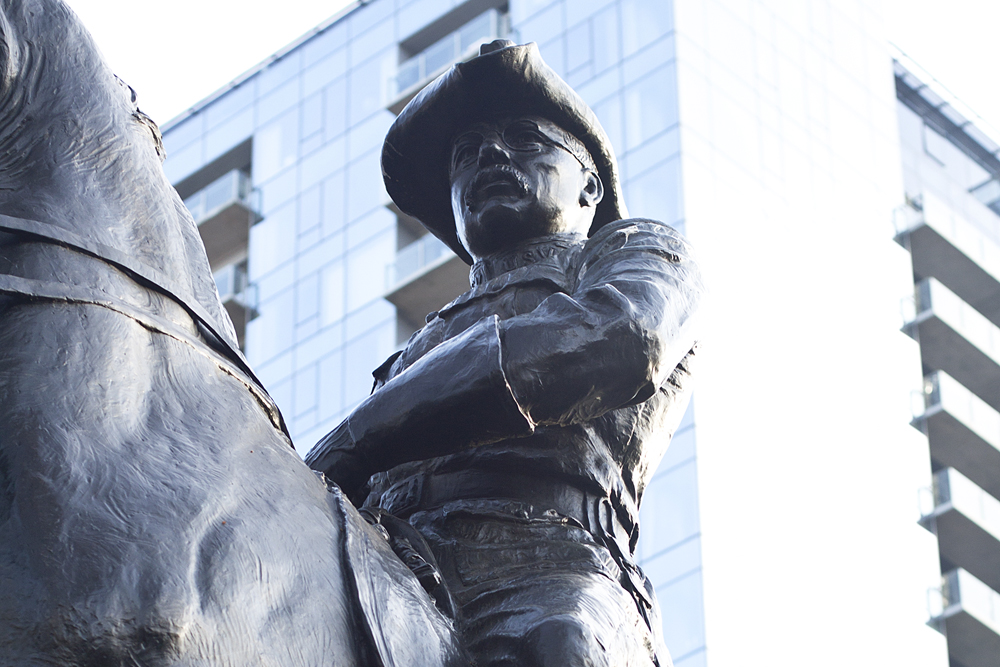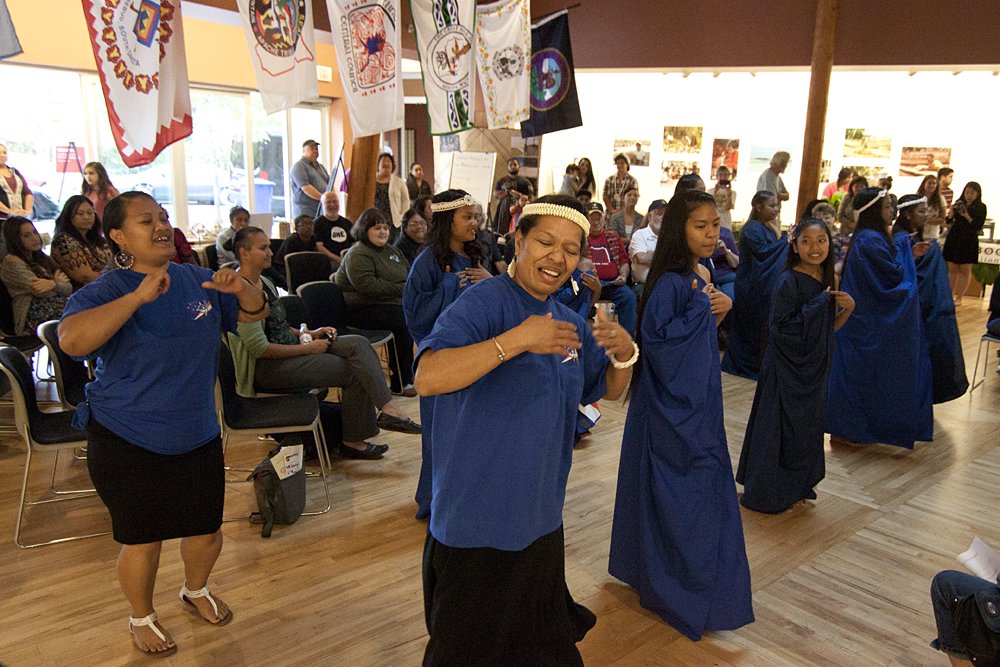In Portland’s South Park Blocks between SW Jefferson St. and SW Madison St. stands a hulking monolith of American history. Atop a pillar of granite and a trusty steed of bronze rides Theodore Roosevelt. Outfitted in a calvary uniform with a wide brim hat, eyeglasses, sword and pistol, Teddy sits serene and stoic.
The statue is a representation of the rugged manliness and astute control Roosevelt embodied. Born in 1858, he was a child who suffered from severe asthma attacks and stayed indoors most of his early years. The method of treatment for his ailments was a strenuous life of physical activity and personal strength.
After overcoming his illnesses he led a zealous life. He was an advocate of natural history and biology, a writer, explorer, outdoorsman, conservationist, hunter and soldier. He served as New York City police commissioner, assistant secretary of the Navy, governor of New York, vice president and president of the United States.
The time in which Roosevelt is depicted in the statue is one of the most iconic — perhaps even more so than the face
carved into Mount Rushmore.When the Spanish-American War broke out, Roosevelt resigned from his position as assistant secretary of the Navy to volunteer to lead a calvary unit destined to take part in the war in Cuba.
The First U.S. Volunteer Calvary Regiment, the Rough Riders, were comprised of hardy men; cowboys, gamblers, prospectors, hunters and Ivy League collegians. The Riders’ greatest victory came at the greatly fabled charge up San Juan Hill on July 1, 1898. The Riders defeated outnumbered Spanish forces at Kettle Hill and San Juan Hill, allowing the U.S. to begin a siege that would lead to the end of the war. The Riders received significant attention and praise from the press, despite the fact that Buffalo Soldiers had done most of the heavy fighting. Roosevelt was posthumously awarded the Medal of Honor for his actions in 2001.
This is the Roosevelt we see today in the Park Blocks. The statue, entitled Theodore Roosevelt, Rough Rider, was donated as a gift to the city of Portland in 1922 from Dr. Henry Waldo Coe, a long-time friend and admirer of the former president and his politics.
Coe and Roosevelt met in the early days of the Dakota Territory, where Roosevelt was deputy sheriff of Morton County and Coe was working as a surgeon for the Northern Pacific Railroad. The two became friends before Coe retreated west to settle in Portland in 1890, and would continue to remain close until Roosevelt’s death in 1919.
The statue is one of Portland’s few equestrian statues, created by the American sculptor and artist Alexander Phimister Proctor. Proctor was assigned to capture the characteristics most admirable in the man, while incorporating the spirit and life of the West. With cooperation from the Roosevelt family—who sent photographs and clothing—a working model was completed in 1921.
The model was cast in Brooklyn before it was transported to Portland through the Panama Canal, in order to avoid being split into sections and transported via the railroads. An appropriate journey, since the man was the driving force behind the creation of a passage between the Pacific and Atlantic.
Months prior to the un-veiling, Vice President Calvin Coolidge took part in a groundbreaking ceremony while on a trip to Portland. Thousands were present for the ceremony, and Coolidge used a golden spade to dig up the earth. At its dedication the statue was draped with twin American flags that, when parted, were met with enthusiastic cheers from thousands of viewers who broke out in song, singing the official dedicatory song, “The Rider.”
Various speakers shared words at the unveiling, including Coe, Proctor and Portland mayor George Luis Baker, who praised the sculptor for his ability to capture the characteristics of the former president. Rousing words of praise also came from those unable to attend. Oregon Governor-elect Walter M. Pierce, Corinne Roosevelt Robinson, Theodore Roosevelt Jr. and President Warren Harding all sent telegrams to be read at the dedication.
“I hereby formally dedicate this statue of Theodore Roosevelt, the Rough Rider, to the children of America. The same spirit of reverence for the great American’s memory which prompted this generous gift to the city of Portland by one of his lifelong friends, has created a masterpiece of the sculptor’s art, a faithful presentment of Roosevelt, the soldier and patriot,” Harding wrote.
“As the years pass, may this statue serve to remind the youth of our land of the leader who was unafraid and whose love for children inspired in them an affection that endures to safeguard the republic. Himself an exemplar of all the civic virtues, Theodore Roosevelt could have no finer memorial than the dedication of the Rough Rider in bronze to the children of America.”
Since the dedication, the bronze outdoorsman has experienced quiet years in the serenity of the Park Blocks. It has experienced rededication, cleanings and turbulent Northwest weather, but he continues to stand as a symbol of personal strength and triumph.
As The Oregonian wrote on Nov. 11, 1922: “That statue will ever be an inspiration to the youth of Oregon. It will summon them to turn weakness into strength by exerting their will to endure hardness. It will teach them to scorn difficulty in striving for their goal. It will, by recalling the great events of Roosevelt’s life, prompt them to seek their highest pleasure in work for their country and their fellow men. He was what the nation most needs—a leader of men.”






